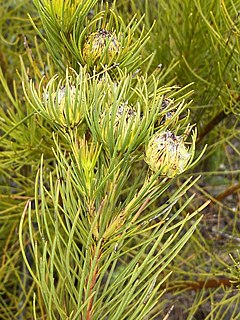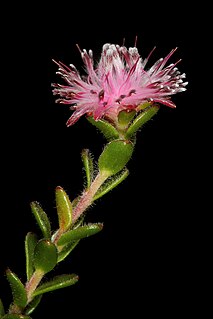
Rhoptropus is a genus of geckos endemic to Southern Africa, better known as Namib day geckos.
The Namib day gecko is a species of lizard in the family Gekkonidae. The species is found in the deserts of Namibia and southern Angola. It is the type species of the genus Rhoptropus.
Barnard's Namib day gecko, also known commonly as Barnard's slender gecko, is a species of lizard in the family Gekkonidae. The species is native to southern Africa.
Rhoptropus biporosus is a species of lizard in the family Gekkonidae. The species is found in Namibia and Angola.

Boulton's Namib day gecko, also known commonly as Boulton's slender gecko, is a species of lizard in the family Gekkonidae. The species is native to southern Africa.

Bradfield's Namib day gecko is a species of lizard in the family Gekkonidae. The species is endemic to Namibia. This species was first described in 1935 by the British-born, South African zoologist John Hewitt, who gave it the name Rhoptropus bradfieldi in honour of the South African naturalist and collector R.D. Bradfield (1882–1949).
Rhoptropus taeniostictus is a species of lizard in the family Gekkonidae. The species is endemic to Angola.
Rhoptropus benguellensis, the Benguela day gecko, is a species of lizard in the family Gekkonidae. The species is endemic to Angola.
Rhoptropus montanus, the mountain day gecko, is a species of lizard in the family Gekkonidae. The species is endemic to Angola.

Spatalla curvifolia, the white-stalked spoon, is a flower-bearing shrub that forms part of the fynbos. The plant is native to the Western Cape, South Africa.
Spatalla mollis, the woolly spoon, is a flower-bearing shrub that belongs to the genus Spatalla and forms part of the fynbos. The plant is native to the Western Cape, South Africa.
Spatalla tulbaghensis, the shaggy-hair spoon, is a flowering shrub belonging to the genus Spatalla and forms part of the fynbos. The plant is native to the Western Cape where it occurs on the Witzenberg Plains and Skurweberg Pass.
Spatalla barbigera, the fine-leaf spoon, is a flower-bearing shrub that belongs to the genus Spatalla and forms part of the fynbos. The plant is native to the Western Cape, South Africa.

Aulax pallasia, the needle-leaf featherbush, is a shrub that is native to the Western Cape and belonging to the genus Aulax. This plant is widespread, it occurs in the Piketberg, Koue Bokkeveldberge to the Hottentots-Hollandberg, Groenlandberg to the middle of the Langeberg and also the Riviersonderendberg. The shrub grows upright with a single stem and grows up to 3.0 m tall. There are few twigs on the trunk.

Serruria glomerata, the cluster spiderhead, is a flower-bearing shrub that belongs to the genus Serruria and forms part of the fynbos. The plant is native to the Western Cape, it occurs on the Cape Flats and Cape Peninsula. The shrub is erect and grows only 40 cm tall and bears flowers from August to October.
Diastella buekii, the Franschhoek silkypuff, is a flower-bearing shrub that belongs to the genus Diastella and forms part of the fynbos. The plant is native to the Western Cape and occurs in the Franschhoek and Wemmershoek valleys. The shrub is flat and grows only 15 cm tall and bears flowers from August to November.

Diastella divaricata is a flower-bearing shrub that belongs to the genus Diastella and forms part of the fynbos. The plant is native to the Western Cape and is found on the Cape Peninsula south of the Silvermine Nature Reserve. The shrub is flat and grows only 50 cm high but 3 m in diameter and flowers throughout the year without an obvious peak.
Diastella myrtifolia, the Tulbagh silkypuff, is a flower-bearing shrub that belongs to the genus Diastella and forms part of the fynbos. The plant is native to the Western Cape and is found in the Groot Winterhoek. The shrub is erect to semi-erect with mat-shaped spreading branches.
Diastella parilis, the Worcester silkypuff, is a flower-bearing shrub that belongs to the genus Diastella and forms part of the fynbos. The plant is native to the Western Cape and occurs in the Breede River Valley from the Elandskloof to the Slanghoek Mountains. The shrub is erect and grows 70 cm tall and bears flowers from July to January.
Diastella thymelaeoides is a flower-bearing shrub that belongs to the genus Diastella and forms part of the fynbos. The plant is native to the Western Cape and occurs in the Hottentots Holland Mountains and northern Kogelberg around the Steenbras Dam. The shrub grows upright and grows only 1.5 m tall and flowers throughout the year with a peak from August to November.








